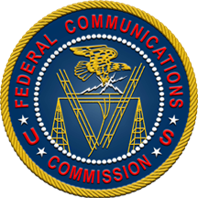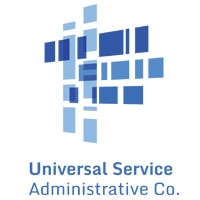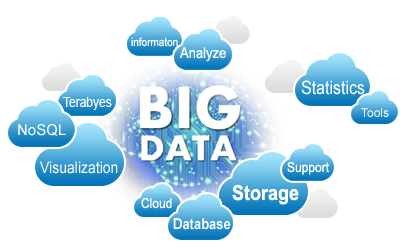The July 1, 2019 deadline to begin CAF performance testing is just around the corner. The summer might feel like it will never be here (especially if you live in the Northeast), but it will be here before you know it. And with it, the requirement to have your testing program up and running according to the standards laid out in the FCC Order. While there have been many petitions for clarification on the order, there has been no indication by the FCC that they plan to delay the order beyond the original July 1, 2019 deadline.
Ryan Guthrie
Recent Posts
A few months ago the FCC released order DA 18-710 specifying the network performance testing and reporting required for ISPs who receive support from the Connect America Fund (CAF). The order is nearly 40 pages, but in this post we will summarize the requirements and provide some options for how ISPs can comply.
Who Must Comply?
Recipients of CAF high-cost universal service support, including:
Topics: Regulatory, FCC, stamper box, connect america fund
Chalk Talk: Burstable Circuit Billing Accuracy - Part 2
Burstable billing, also known as 95th percentile billing, can present a variety of challenges if it's not regularly tested and monitored to ensure accuracy and completeness. While this type of billing arrangement is a nice benefit for customers and is often used as a marketing incentive, it can very easily lead to substantial revenue loss if any of the systems or procedures used to collect, mediate, and ultimately bill the customer are not functioning properly.
We recently posted 'Part 1' of this video series where our CTO Peter Mueller discussed how ATS' stamper box solution and data analytics help ISPs ensure accurate and complete billing for enterprise customers with burstable circuits. In this video, Peter discusses how we help carriers quantify the common issues we uncover as well as their root cause and ultimately put controls in place to monitor and alarm when specific error conditions occur.
Topics: Chalk Talk, stamper box, 95th percentile billing, burstable billing
Tell me if this story sounds familiar. You have an idea, a hunch, a theory that you'd like to 'flush' out. BUT, in order to do so, you need access to data from last month, maybe it's CDRs, billing data, smart meter data, etc. The emails, conference calls, and requests you'll have to make to get your hands on that data are daunting at best. But it's your data right? Why should you have to jump through so many hoops to get access to it? By the time you can even figure out who "owns" the data, you're onto the next task and your great idea is wasted, yet again.
Over the years, I can't tell you how many times the 'data access' issue has delayed or even completely stopped a project we've been involved with. Not because the idea didn't make sense or the business case didn't prove out, simply because getting the data from 'Point A' to 'Point B' was going to take too much time and effort. This is the definition of a 'data plumbing' issue. Big data tools are getting better, faster, cheaper, and more available every day. But the challenge of extracting and integrating data from a variety of sources has become an issue that organizations simply can't ignore. It's the ugly truth behind data analytics - it often takes more time and energy to extract, clean, and integrate the data than it takes to do the analytics itself.
Topics: Telecom Data Analytics, Big Data, BigQuery, ESAP, Data Plumbing
In February 2018, an up and coming VoIP service provider contacted us about performing a USF traffic analysis before their next quarterly filing. With the 'Safe Harbor' rate set at 64.9% and the quarterly contribution factor increasing to an all time high of 19.5%, D3 Unified Communications decided it was time to explore the option of performing a traffic study.
Within 1 week, we had a data sample from D3 and provided a free high level estimate of what their actual PIU would be if we completed the traffic study. Our quick analysis on the data estimated that their actual PIU would be less than half of the 'Safe Harbor' rate of 64.9%. The decision to perform the traffic study became an easy one to make as the savings were very evident.
Topics: USF, Regulatory, Case Study, FCC
Burstable billing, also known as 95th percentile billing, can present a variety of challenges if it's not regularly tested and monitored to ensure accuracy and completeness. While this type of billing arrangement is a nice benefit for customers and is often used as a marketing incentive, it can very easily lead to substantial revenue loss if any of the systems or procedures used to collect, mediate, and ultimately bill the customer are not functioning properly.
In this chalk talk video, CTO Peter Mueller discusses how ATS' stamper box solution and data analytics help ISPs ensure accurate and complete billing for enterprise customers with burstable circuits.
Topics: Chalk Talk, stamper box, 95th percentile billing, burstable billing
Cloud storage has been around since the 1960s, but it’s only in recent years that we’re beginning to understand and deploy the technology to its full potential. For telcos coming to grips with the advantages of having access to big data, the cloud offers a range of benefits.
Cost Benefit
Cloud storage has become cheaper over the years, with giant providers like Google and Amazon able to leverage economies of scale and keep the market competitive. Since data sets are likely to get bigger as time goes by, managing the cost of storage is crucial to enable companies to remain competitive in their target markets. Using the cloud results in lower operating costs, reduced overheads, and lower hardware and maintenance expenses.
Topics: Big Data, Cloud, ESAP, Cloud Storage
The Importance of Developing a Fraud Detection and Prevention System
In most companies, fraud is identified only after it occurs. Measures are then implemented to prevent it from happening again. Ideally, businesses want to find ways to prevent fraud from taking place, or, if that’s not possible, to detect it before significant damage is done. In the event that they are unable to prevent it in a timely fashion, however, fraud detection is the best bet for eradicating it from the environment and preventing a recurrence.
Topics: Fraud, Fraud Prevention
What Does Data Driven Mean For The Telecom Industry
Big data is big news in almost every industry, and telecom is no exception. The report “Big Data and Telecom Analytics Market: Business Case, Market Analysis & Forecasts 2014 – 2019” from Mind Commerce forecasts a 50% growth by 2019 in the big-data-driven telco analytics environment, which will deliver annual revenue of $5.4 billion. Apart from opening up a multitude of jobs for telecom data scientists, data will increasingly become a competitive differentiator for telcos.
Topics: Telecom Data Analytics, Big Data, ESAP, Data Driven
The proposed USF Contribution Factor for 4th Quarter 2017 is 18.8%.
The FCC recently announced that the proposed Federal Universal Service Fund ("USF") contribution factor for the 4Q of 2017 will be 18.8%. This is a significant increase from the 3Q rate of 17.1% and the highest contribution factor in the history of the USF.
What Should You do?
Topics: USF, Regulatory







